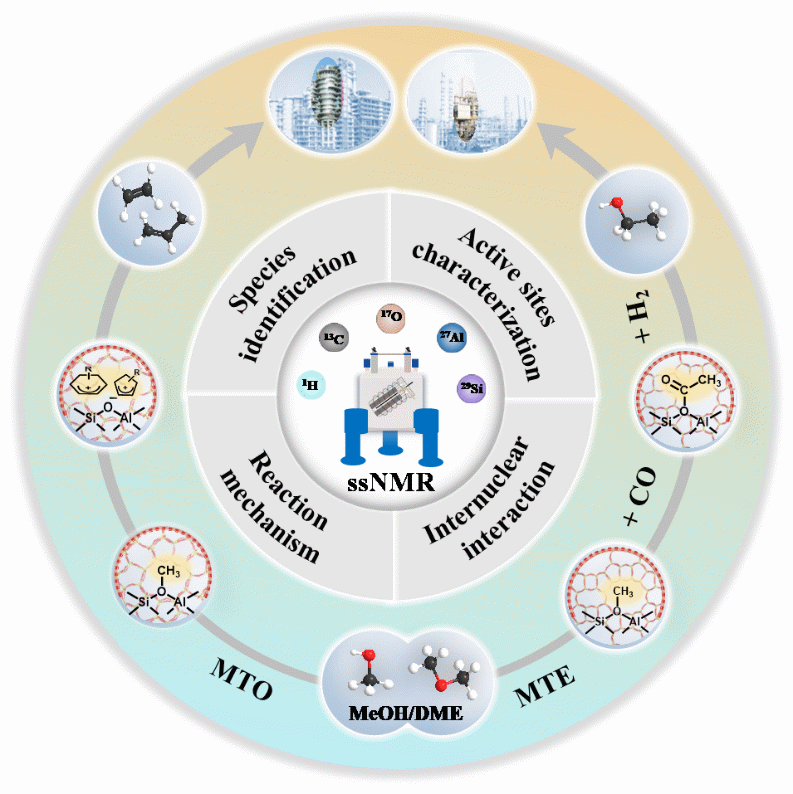With traditional petroleum-based routes facing increasing constraints, the conversion of C1 platform molecules, particularly methanol, has emerged as a crucial alternative for producing fundamental chemicals via non-petroleum pathways.

Schematic depiction of the application of ssNMR spectroscopy during methanol conversion to olefins and ethanol process (Image by NIU Jing and DING Xinzhi)
In a review article published in Chemical Society Reviews, a research group led by Prof. XU Shutao, Prof. WEI Yingxu, and Prof. LIU Zhongmin from the Dalian Institute of Chemical Physics (DICP) of the Chinese Academy of Sciences (CAS) provides a comprehensive overview of the application of solid-state nuclear magnetic resonance (ssNMR) spectroscopy in methanol to olefin (MTO) and dimethyl ether (DME) carbonylation reaction. DME carbonylation is a key step in the methanol to ethanol conversion process.
Researchers highlighted the pivotal role of ssNMRspectroscopy in advancing the understanding of methanol conversion mechanisms. It has enabled researchers to identify key intermediates, unravel dynamic catalytic mechanisms, probe host guest interactions, analyze diffusion behavior, and explore the unique role of water in these complex reactions.
In situ ssNMR spectroscopy enables dynamic observation of catalytic processes under reaction conditions, offering valuable insights into the behavior of active catalysts. Additionally, two-dimensional ssNMR has revealed molecular and atomic level host guest interactions, deepening understanding of reaction pathways and catalyst interface properties.
Despite these advances, researchers pointed out that a major challenge remains in bridging fundamental studies with industrial-scale MTO/DMTO technologies. They emphasized the need to validate laboratory-observed phenomena under industrial reactor conditions to ensure practical relevance. Continuous feedback from industrial applications is essential for refining theoretical models, optimizing catalyst design, and improving catalytic performance, which in turn promotes technological innovation and industrial upgrading.
"This review aims to bridge fundamental understandings of reaction mechanisms with practical applications," said Prof. XU. "Such insights are crucial for rational catalysts design, optimization of catalytic performance, and the improvement of industrial processes."